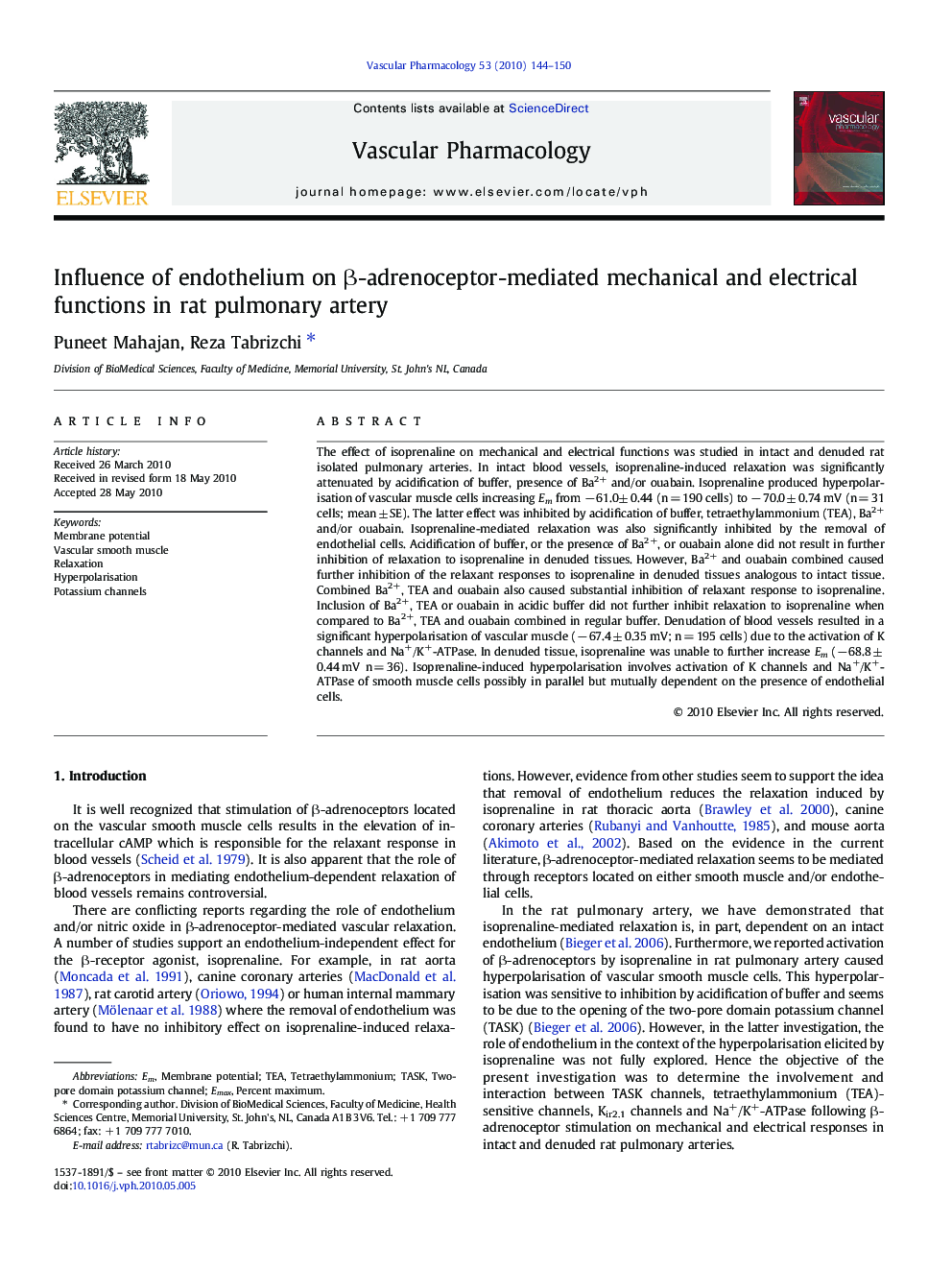| Article ID | Journal | Published Year | Pages | File Type |
|---|---|---|---|---|
| 5847651 | Vascular Pharmacology | 2010 | 7 Pages |
The effect of isoprenaline on mechanical and electrical functions was studied in intact and denuded rat isolated pulmonary arteries. In intact blood vessels, isoprenaline-induced relaxation was significantly attenuated by acidification of buffer, presence of Ba2+ and/or ouabain. Isoprenaline produced hyperpolarisation of vascular muscle cells increasing Em from â 61.0± 0.44 (n = 190 cells) to â 70.0 ± 0.74 mV (n = 31 cells; mean ± SE). The latter effect was inhibited by acidification of buffer, tetraethylammonium (TEA), Ba2+ and/or ouabain. Isoprenaline-mediated relaxation was also significantly inhibited by the removal of endothelial cells. Acidification of buffer, or the presence of Ba2+, or ouabain alone did not result in further inhibition of relaxation to isoprenaline in denuded tissues. However, Ba2+ and ouabain combined caused further inhibition of the relaxant responses to isoprenaline in denuded tissues analogous to intact tissue. Combined Ba2+, TEA and ouabain also caused substantial inhibition of relaxant response to isoprenaline. Inclusion of Ba2+, TEA or ouabain in acidic buffer did not further inhibit relaxation to isoprenaline when compared to Ba2+, TEA and ouabain combined in regular buffer. Denudation of blood vessels resulted in a significant hyperpolarisation of vascular muscle (â 67.4 ± 0.35 mV; n = 195 cells) due to the activation of K channels and Na+/K+-ATPase. In denuded tissue, isoprenaline was unable to further increase Em (â 68.8 ± 0.44 mV n = 36). Isoprenaline-induced hyperpolarisation involves activation of K channels and Na+/K+-ATPase of smooth muscle cells possibly in parallel but mutually dependent on the presence of endothelial cells.
Graphical abstractDownload high-res image (174KB)Download full-size image
